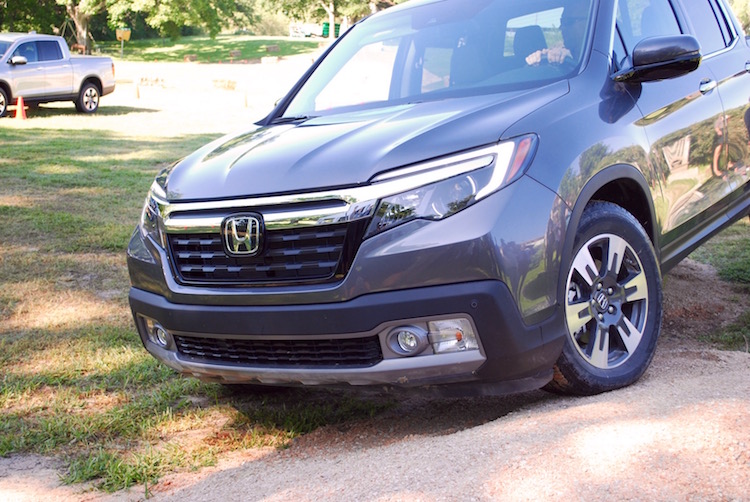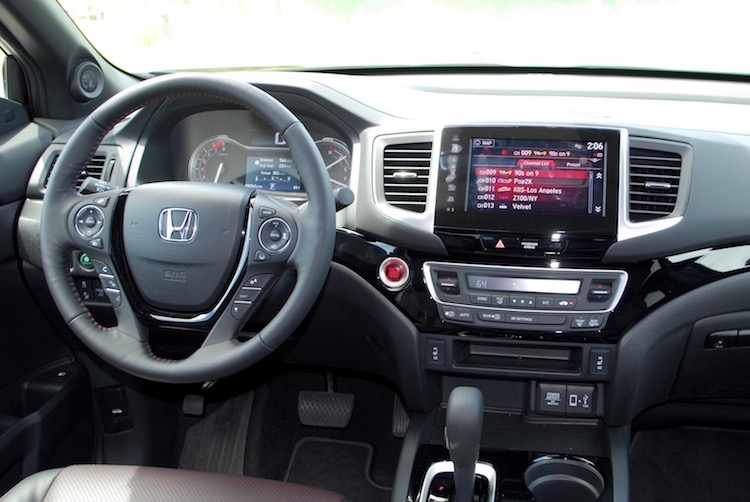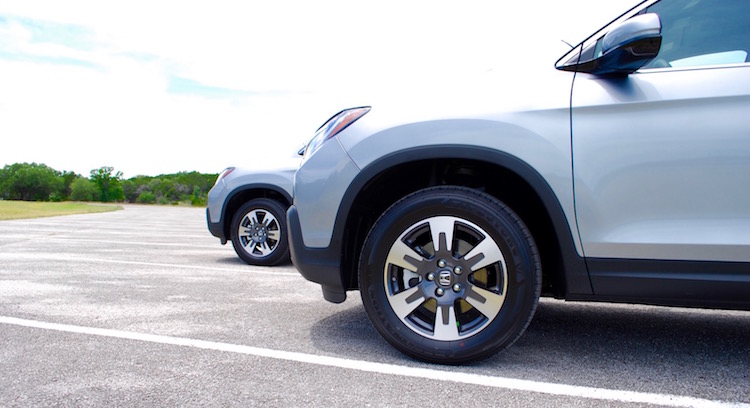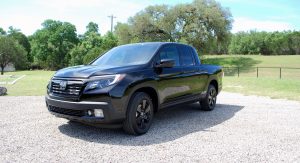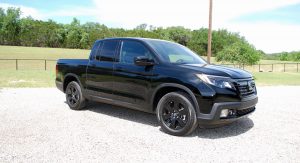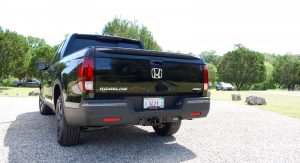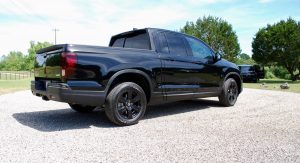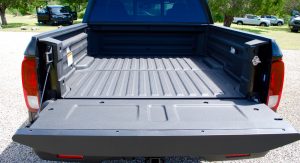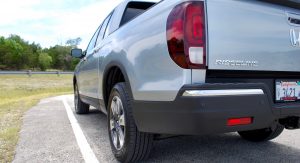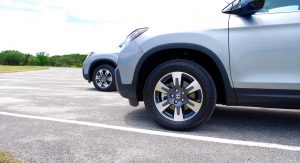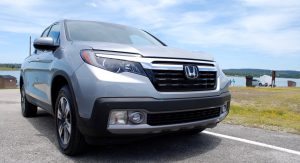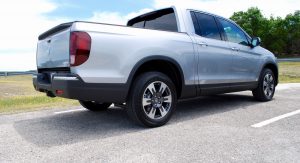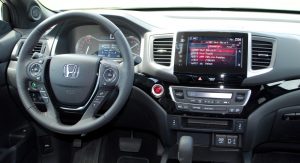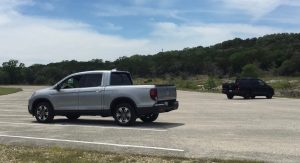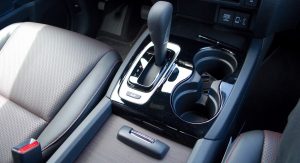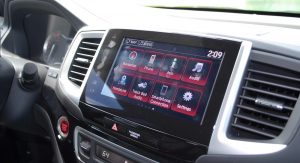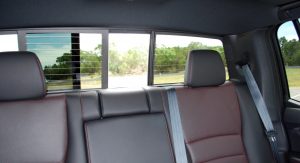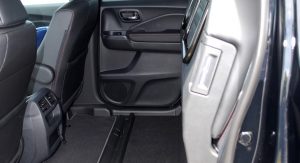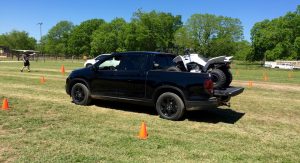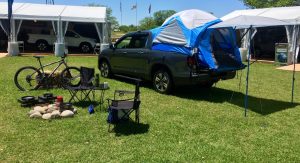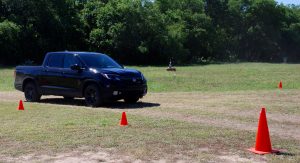You haven’t had your fill of light trucks yet, Americans.
After all, gas is cheap for the most part and our aging driving population wants conveniences like all-wheel drive and to not be reminded of arthritis when getting in and out of a low-slung car.
And now there’s a new Honda Ridgeline, the pickup truck for people who want a Honda. You’re never buying cars again.
Way back in 2006, the first Ridgeline was marketed as a car toughened up to look and act like a truck – all the truck you’d ever need. And while it gained a group of fervent supporters, the Ridgeline failed to make even a ding in the truck market. After 11 years, Honda has given it another try, but by flipping the formula of the first: The Ridgeline looks like a truck, but drives just like your typical Honda.
Does that quality also make it the truck you want to live with?
I liked the old Ridgeline, but it took me a few years to. In fact, Honda says even Ridgeline owners were not wild about the way it looked.
This new Ridgeline looks like a truck right off the bat, there’s no argument about that.
Function takes over from form, although the front end is certainly Pilot-like and inoffensive. Whereas the old Ridgeline had lots of um… ridges, along the sides, the new one is largely characterless. It’s unremarkable at a time trucks are starting to actually be styled. Parked up against its prime rivals, the Chevy Colorado and Toyota Tacoma, and the Ridgeline looks especially plain. And those expecting the four-wheel drive models to look any different than the standard front-drive ones will be disappointed, too.
There is no Ridgeline running on steel wheels, as all get 18-inch aluminum wheels among the the half-dozen models Honda offers. The Black Edition is the current top of the heap, getting all of the leather and tech bits, but dipped entirely in black paint. I’m not a fan. If Honda wants to do a wild special edition, this isn’t it.
Carlike perfectly describes the inside of the new Ridgeline.
This one is lifted straight from the latest Honda Pilot. That’s a good thing, for the most part.
The center console and storage areas are more useful than in other small trucks, also because they’re lifted from the family friendly crossover. Materials are consistently good, among the best Honda has right now and definitely a cut above the rival trucks. Even base models with the 5-inch radio screen have good-looking interiors.
It may be the most family friendly truck, too. The rear doors don’t open very wide, but adults shouldn’t have problems squeezing inside where there’s ample legroom and a backrest that doesn’t force you to sit bolt upright like in other four-door trucks. But you could always fold up the rear seat bases like in a Honda Fit or HR-V and stick plenty of cargo inside.
The Ridgeline’s party piece continues to be in the cargo bed, where the tailgate that folds down or swings to the side continues. The in-bed trunk is also back, larger than before. And top-line RTL-E and Black Edition trucks get a bed light and the Truck Bed Audio system so your music can play while tailgating, or so Honda thinks. Because you can have audio playing out of the truck bed at up to 10 mph, it would be perfect for terrible traffic jams.
If you’re familiar with Honda products, you’ll sometimes think you’re living with an Accord or Pilot rather than a truck.
A photo posted by Zac Estrada (@zacestrada)” style=”font-family: Arial,sans-serif; font-size: 14px; line-height: 17px;”>Jul 8, 2015 at 12:49pm PDT
Texasville
The carlike traits come also from the way the Ridgeline is constructed in the first place. Think of it as a beefier Pilot underneath. Well, lean beef, anyway.
You can basically read what I thought of driving the 2016 Pilot to understand what the Ridgeline is like. In short, the 3.5-liter V6 uses its 280 horsepower perfectly and the six-speed automatic is so good you don’t even notice it working. Power is readily available and inaudible, even when towing close to the Ridgeline’s 5,000 pounds of capacity.
Eager to show us what the minority of Ridgeline owners do, Honda sent us out to a ranch in Texas. The truck didn’t feel out of its element, but the Ridgeline should be by far the cushiest way to haul the hay bales around. Credit goes to the super-solid construction, which Honda says is leaps and bounds stronger than what competing pickups offer. In a Chevy Colorado or Toyota Tacoma, body creaks or shudders are expected. By comparison, Honda made a truck that’s eerily quiet.
The Ridgeline is also quite competent off road, complete with a torque-vectoring all-wheel drive system (front-drive models are standard fare) and a button to toggle through preset modes for snow, sand and mud. It won’t go where something stamped “TRD Pro” will go, but at least it should be like a magic carpet ride across a farm trail. That’s why Texas is completely full of trucks, right?
Colorado and Tacoma owners probably don’t care their trucks drive like trucks. Getting into the Ridgeline, however, proves a compact truck doesn’t have to beat you up.
I found myself at odds with the Ridgeline’s steering, however. While it’s extremely maneuverable in tight spaces and a doddle to use for what most drivers will encounter most of the time, the engine and trick all-wheel drive pressure you to go faster – as they did when I drove the Pilot last year – and the electric power steering is too light and too numb at higher speeds to give me confidence.
It isn’t supposed to be a sports car, but driving the Ridgeline left me cold. Yes, it does everything well, but it’s ultimately unremarkable. I expected the ride to be harsher, bouncier, more trucklike. Staring at a Pilot interior, using corporate Honda switches, I constantly forgot I was driving a truck.
And then I remembered that’s the whole point of the Ridgeline.
It’s very clear the mandate from customers to the accountants was to make this Ridgeline truck look more like a truck without making it drive like one. They’ve succeeded and then some. But is there a market for that beyond the 200,000 or so who bought the first truck?
Fortunately for Honda, smaller trucks have gotten bigger and more expensive than when the company first brought out the Ridgeline in 2005, so now they’re competing basically dead-on with GM and Toyota. A base Ridgeline RT will start from $30,375 in front-drive RT form when the trucks go on sale sometime in June, while the loaded Black Edition is about $43,000.
The Honda Ridgeline is universally appealing to those in search of practicality. There’s legitimate space inside for four adults and by far the smartest bed arrangement of any pickup. But it’s the lack of compromise that will draw in CR-V or Pilot owners looking for that little bit of extra versatility. You can treat a Ridgeline like a truck one day a week and like a car the other six days.
Where the Ridgeline ultimately falls down, however, is as a truck with the image of a truck. It has all the substance, but lacks the look and feel pickup loyalists keep coming back to the well for.
The Ridgeline is more than ever the truck for non-truck people. Those wanting to live out Brawny man fantasies should look elsewhere.
Photos: Zac Estrada/Carscoops




